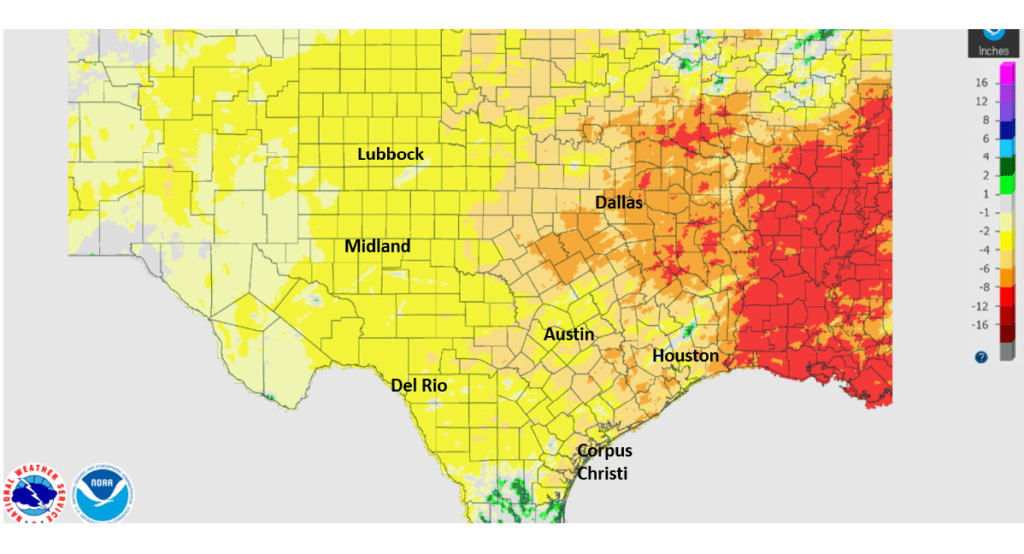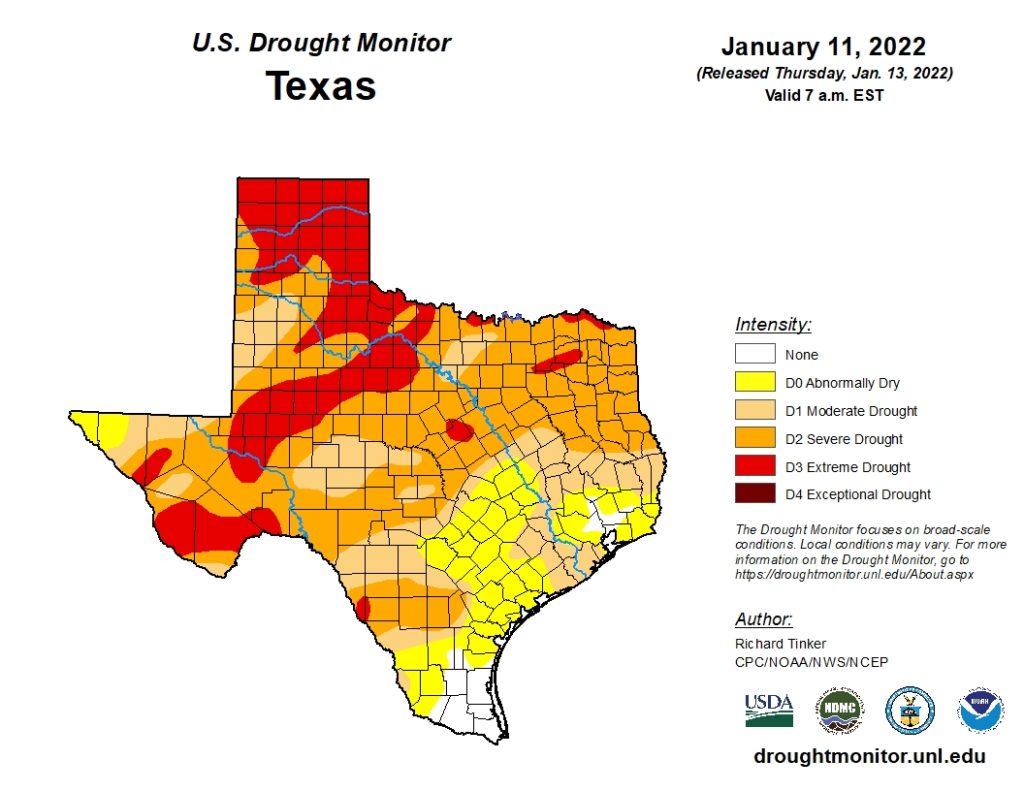It’s been over two months since our region has seen a widespread, soaking rain event. Rainfall has been below normal across the region during November, December and so far in January. And for a large part of the Hill Country, the rain has been below normal dating back to September.

90-Day Rainfall Departure from Normal (Oct. 15 -Jan.12)
Data courtesy National Weather Service West Gulf River Forecast Center
A weak to moderate La Niña in place this fall and winter has been the primary feature responsible for this drier than-normal pattern. La Niña tends to keep the jet stream and storm track up to the north of Texas during the fall and winter months, leading to fewer rain storms and less than average rainfall.
The lack of rain over the past couple of months combined with above normal temperatures, and frequent windy days, has caused drought conditions to develop, expand and deteriorate across Central and South Texas. Thursday’s updated National Drought Monitor showed severe drought, the second of 4 possible drought classifications, for most of the Hill Country along with West and North Texas. Moderate drought, the first of four possible drought categories, was indicated for much of Southeast Texas, including Wharton, Matagorda and Colorado counites. Between these two areas of drought, “Abnormally Dry” conditions were indicated for Central Texas, including the Austin area. Abnormally Dry is not an actual drought category, and refers to areas where conditions are deteriorating and drought impacts are beginning to show up.

Statewide, 83 percent of the state is experiencing some form of drought, with nearly two thirds of the state now classified has being in severe or extreme drought.
In a Thursday monthly update, Climate Prediction Center forecasters called for La Niña conditions to continue into the early spring, with the La Nina dissipating and ENSO-neutral conditions developing sometime in the mid to late spring. With the La Niña in place, below-normal rainfall is predicted for the rest of January, February and March. However, the trend for below-normal rain is forecast to fade going into April and May.
Bob


Social Media